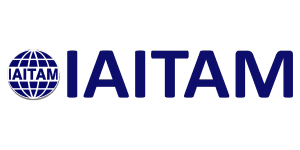Investing in the Future

How good are you at predicting the future? It’s been said that the past is the best indicator of future behavior. But when it comes to digital transformation, it’s all about the data. In other words, you’re only as good as the data upon which you’re building your forecasts.
In everyday strategic planning, corporate strategists must ensure the organization is aligned around the enterprise core purpose and ultimate mission. This clarity of direction and documentation of organizational requirements are essential for digital initiatives to be successful. Without it, organizational functions will fail to properly prioritize their own transformations goals over time.
Ultimately, aren’t we all seeking to be in control of our own future? Ownership and destiny are intrinsically aligned, which is why it’s always better to create your budget rather than being assigned one to merely manage. Accountability and control are critical to our Professional success in projecting future results. Accurate and empirical data is not only extremely valuable, but also the lifeblood of all organizations. This is where and when the intersection of data and asset management becomes so powerful.
The age of digitalization is accelerating and dependent on the security of data for both organizations and their customers. Still, the CIO is still ultimately accountable for cybersecurity in most organizations due to the fact that their Board of Directors are being held accountable for data security. This is why Certified IT Asset Managers (CITAMs) or Program Managers are their organization’s most valuable player (MVP) due to the fact that they ultimately ‘hold the keys to the kingdom’ in the sense that they’re the only one responsible for knowing who, what, when, where, why, and how data-bearing devices are being used throughout the organization … or not!
Consequently, the alignment of data, features, and functionality become the basis upon which infrastructure requirements are established. The incremental transformation of your business is driven by your ITAM Program Manager. Many businesses underestimate the true cost of maintaining outdated IT systems.
In functions where governance is a key responsibility — from risk and audit to finance and legal and compliance — leaders are identifying effective ways to inject their expertise and guardrails into business strategy and operations even when decision-making is highly distributed.
In the era of digital transformation, businesses need to rapidly evolve and adapt to managing innovative technologies. However, outdated and aging IT infrastructure hinders growth and innovation, limiting their digital transformation goals.
A 2023 Gartner survey revealed that 87% of senior business leaders say digitalization is a company priority, yet only 40% of organizations have brought digital initiatives to scale. This gap often stems from inadequate IT infrastructure.
To effectively compete within your vertical market, your core business functions must be function on a flexible, scalable IT infrastructure that adapts to your changing organizational needs in real-time. This isn’t a far-off dream – it’s the reality for companies that have embraced IT modernization.
In order to compete in the new & emerging digital economy, it is essential to both leverage and manage the lifeblood or your organization ~ its data. Planning, budgeting, and forecasting for infrastructure transformation must be at the forefront of Executive decision-making in anticipation of Win11 rollouts, AI and IoT integrations. For instance, Walmart’s adoption of AI for inventory management reduced out-of-stock items by 30%, and a 10-15% boost in online sales directly improving customer satisfaction. So, how do you achieve these transformative results? The key lies in a strategic, methodical approach to IT infrastructure modernization.
This new operating reality of multiple stakeholders and rewired accountabilities is playing out in all enterprise functions, challenging them to meet their core responsibilities and manage new risks at the speed of digital business as evolving business models change the value proposition, customer base, profit model and/or business capabilities.
Progressive procurement departments deliver a feeling of certitude to business partners that lessens their anxiety, uncertainty, and exasperation during purchasing and thus alleviates the kind of pressure that can force procurement to make bad and costly trade-offs just to speed up buys. Again, this is why the Procurement function has been centralized ~ to minimize rogue buying and/or ‘shadow IT’. The same is true at the end of life (EoL), to reduce the need for net-new purchases and tightly control the IT asset disposition (ITAD) process.
Following are some facts & figures I’ve found on-line to support my premise that ownership and control are key to driving & predicting your future:
- Two out of three organizational transformations are unsuccessful.
- 72% of strategists say their company’s digital efforts are missing revenue expectations.
- 67% of companies have missed expectations of profit growth from digital initiatives.
- Only 20% of corporate strategists are clear on how business model change will enable their company to win.
- Only 18% of research and development (R&D) leaders trust the models they currently use to evaluate transformational projects.
- R&D investment in transformational investments has declined by 23% between 2013 and 2017.
